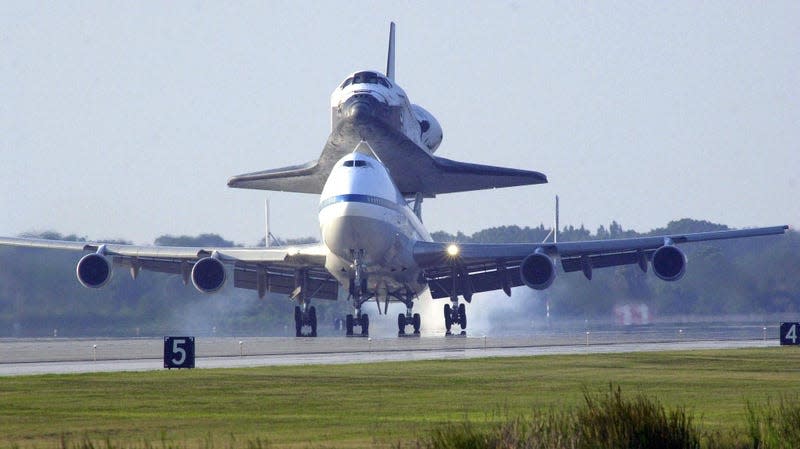The final 747 has rolled off the Boeing production line
The last 747 rolled off the production line on Dec. 6, as Boeing shut down production of the giant plane that built the airline systems of the 20th century.
Dubbed the Queen of the Skies, the 747 can transport more than 500 people at a time. The plane with the iconic bulge above the cockpit has carried movies stars and presidents, and it still serves as Air Force One. It has even carried a space shuttle.
Read more
Most importantly, the 747 was the workhorse that flew regular people to airline hubs across the world as airlines grew and air travel become more accessible. Each landing poured hundreds of passengers into major airports, to be shuttled by smaller planes to final destinations.
But that all changed about 20 years ago, when Boeing made a bet that people didn’t really want to travel that way.
A new way to travel by air was soon made obsolete
With the 747, Boeing invented the wide-body, two-aisle airplane. When the model first went into service in 1969, connecting flights were part of the excitement and novelty of flying. These days, the prospect of a connection conjures images of Planes Trains and Automobiles: One storm in Chicago can wipe out holiday gatherings across the country.
As airplane technology improved, air travel was transformed. Boeing developed smaller, fuel efficient airplanes that could fly farther. By the 21st century, it became the norm for passengers to skip over hubs for convenient, nonstop flights.
In 2002, Boeing quoted Randy Baseler, then the head of marketing for commercial airplanes, on the shift to smaller aircraft.
“The thinking behind Boeing’s theory of market fragmentation is this: the current hub-and-spoke system will break into smaller fragments—routes that are point-to-point rather than point-hub-point … If you want to go to Beijing, you go directly to Beijing without passing through Tokyo. If passengers have a choice, it’s pretty obvious that’s what they’d want.”
Over time, the 747 behemoth, already facing competition against newer, more fuel efficient wide-body models like the 777, became less useful to airlines. Airlines began transitioning to narrow-body aircrafts like the 737. Today, the 747 is the least fuel efficient wide-body plane in service.

Carrying the space shuttle
The shift to smaller planes has not been entirely smooth. Boeing’s transition to the 737 model has been closely scrutinized by regulators after the deadly Lion Air and Ethiopian Airline crashes in recent years.
Airbus goes big
While Boeing was betting on smaller planes, its rival, Airbus, went big, developing the A380, which can hold as many as 853 passengers. Airbus halted production of the massive plane in 2021 as airlines grounded their aircraft amid the pandemic. Post-covid, many of those planes are returning to service.
The 747 was certified in 1969. The first flight took off in 1970 from New York JFK to London Heathrow, two historic airport hubs. The operator was Pan Am, an airline that is now defunct. Boeing built 1,574 of the 747 model over the course of more than five decades.

Back in the day: 1971
Despite its waning popularity as a passenger plane, the 747 has served a purpose as a cargo jet in recent years, playing a critical role to a variety of logistics companies. The 747 that was completed this week in Everett, Washington, will be delivered to cargo carrier Atlas Air, a fitting fate for the final 747 to roll off the assembly line.
More from Quartz
Sign up for Quartz's Newsletter. For the latest news, Facebook, Twitter and Instagram.


